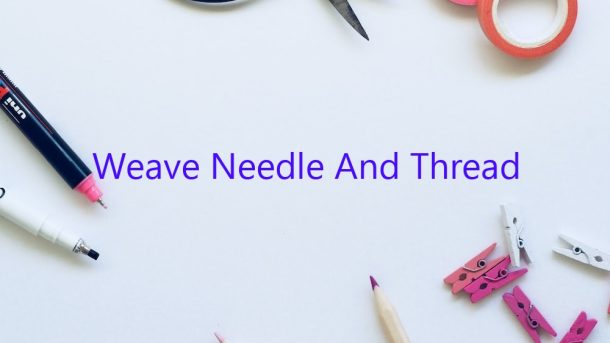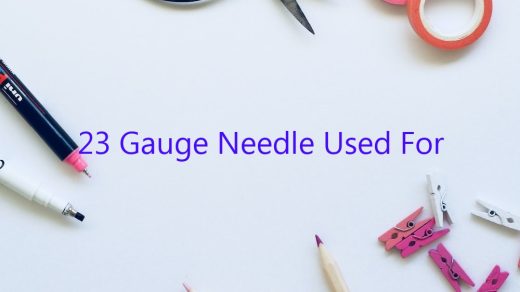Weaving is an ancient technique that is still popular today. It is used to create fabric by intertwining two sets of yarn or thread. The type of weave used will determine the appearance and strength of the fabric. There are many different types of weave, but the most common are plain weave, twill weave, and satin weave.
Weaving can be done on a variety of looms, including hand looms and mechanical looms. The type of yarn or thread used will also affect the type of weave. There are many types of yarn, including wool, cotton, polyester, and rayon. Thread is usually made from either cotton or polyester.
The process of weaving begins by threading the warp onto the loom. The warp is the set of vertical yarns that will be used to create the fabric. The weft is the set of horizontal yarns that are woven through the warp. The weft is usually passed over and under two or more warp yarns.
Weaving can be a very simple process, or it can be more complex, depending on the type of weave. For example, plain weave is very simple, while twill weave is a little more complicated. Satin weave is the most complex, and can be quite difficult to master.
Weaving is a very versatile technique that can be used to create a variety of fabrics. It is often used to create fabrics for clothing, but it can also be used to create home decor, such as curtains and rugs. Weaving is a great way to use up scrap yarn or thread, and it is a fun way to get creative with fabric.
Contents
What is a weave needle?
Weave needles are a type of needle used in weaving. They are thin and have a pointed end, making them perfect for weaving in and out of the warp and weft threads. Weave needles come in a variety of sizes, depending on the thickness of the thread you are using. They are also available in a variety of materials, including metal, plastic, and bamboo.
Weave needles are an essential tool for any weaver. They allow you to easily weave in and out of the warp and weft threads, creating a strong and durable fabric. Weave needles are also useful for repairing damaged fabric. If a thread is broken, you can use a weave needle to weave it back into place.
Weave needles are available in a variety of sizes, depending on the thickness of the thread you are using. The most common sizes are size 10 and size 16. size 10 is suitable for use with cotton thread, while size 16 is suitable for use with wool thread.
Weave needles are also available in a variety of materials, including metal, plastic, and bamboo. Metal weave needles are the most common type, and they are available in both steel and brass. Plastic weave needles are a good option for those who are allergic to metal, and bamboo weave needles are a good option for those who are looking for a more environmentally friendly option.
Weave needles are an essential tool for any weaver. They allow you to easily weave in and out of the warp and weft threads, creating a strong and durable fabric. Weave needles are also useful for repairing damaged fabric. If a thread is broken, you can use a weave needle to weave it back into place.
What type of thread is used for hair weaving?
There are several types of thread that can be used for hair weaving. The type of thread used will depend on the type of weave that is being installed.
One type of thread that is commonly used for hair weaving is cotton thread. Cotton thread is strong and durable, and it is relatively easy to work with. It is also relatively inexpensive, making it a good option for those who are on a budget.
Another type of thread that can be used for hair weaving is nylon thread. Nylon thread is also strong and durable, and it is less likely to break than cotton thread. However, it is more expensive than cotton thread.
A third type of thread that can be used for hair weaving is silk thread. Silk thread is soft and delicate, and it is more likely to break than cotton or nylon thread. However, it is also more expensive than cotton or nylon thread.
Ultimately, the type of thread that is used for hair weaving will depend on the individual’s needs and preferences. Some people may prefer to use cotton thread because it is strong and durable, while others may prefer to use silk thread because it is soft and delicate.
How do you use a weaving needle?
Weaving needles are a type of needle that is specifically used for weaving. They have a sharp point at one end and a blunt point at the other. The blunt point is used to push the weft yarn through the warp yarn, while the sharp point is used to pierce the weft yarn and hold it in place.
Weaving needles come in a variety of sizes, depending on the thickness of the yarn that is being used. They can also be either straight or curved. Straight needles are generally used for weaving finer yarns, while curved needles are used for weaving thicker yarns.
When using a weaving needle, it is important to make sure that the sharp point is facing downwards, so that it does not pierce the yarn. It is also important to keep the fingers of your non-weaving hand away from the sharp point, in order to avoid getting injured.
Weaving needles can be used to create a variety of different weaving patterns. Some of the most common patterns include the checkerboard pattern, the basket weave pattern, and the herringbone pattern.
What is a threading needle used for?
A threading needle is a needle with a small hole in the middle of the needle. The hole is used to thread a piece of thread through the needle. This is used to sew two pieces of cloth together.
What tools are used for weaving?
Weaving is an ancient art form that is still popular today. It is a process of creating fabric by interlacing yarns. There are many different tools that can be used for weaving, depending on the type of weaving you are doing.
One of the most important tools for weaving is a loom. A loom is a frame that holds the fabric in place as it is being woven. There are many different types of looms, including floor looms, frame looms, and tapestry looms.
Another important tool for weaving is a shuttle. A shuttle is a small, hand-held stick that is used to shuttle the yarn back and forth across the loom.
Weavers also use a variety of other tools, including a warping board, a beater, and a reed. The warping board is used to prepare the yarn for weaving, the beater is used to beat the weft yarns into the fabric, and the reed is used to control the thickness of the fabric.
Weaving is a very versatile art form that can be used to create a variety of different items, including fabric, rugs, and tapestries. With the right tools and supplies, you can create your own beautiful woven pieces.
How do you thread a loom needle?
Threading a loom needle can be a bit tricky the first time, but once you get the hang of it, it’s easy!
The first step is to find the eye of the needle. This is the small hole at the top of the needle. Then, take the thread and wrap it around the fingers of your left hand a few times.
Next, hold the needle in your right hand and insert the thread into the eye of the needle. Wrap the thread around the needle once and pull the thread through the eye.
Finally, hold the thread in your left hand and pull it tight. You’re now ready to start weaving!
Does weave thread break your hair?
There is a lot of debate surrounding the question of whether or not weave thread breaks your hair. Some people believe that the thread used to sew in extensions causes breakage, while others claim that it does not have any negative effects. Here, we will explore the pros and cons of using weave thread to attach extensions.
Weave thread is a type of thread that is specifically designed for sewing in hair extensions. It is thinner and stronger than traditional thread, which makes it less likely to cause damage to your hair. Weave thread is also less likely to tangle or knot, which can cause breakage.
However, some people believe that using weave thread can actually cause more hair breakage. This is because the thread is so thin and strong, it can put a lot of stress on your hair follicles. If you are not careful when sewing in your extensions, you can cause damage to your hair that can lead to breakage.
Ultimately, the decision of whether or not to use weave thread is up to you. If you are careful when sewing in your extensions, and you use a thread that is gentle on your hair, then you should not experience any problems. However, if you are not careful, using weave thread can cause damage to your hair and lead to breakage.




